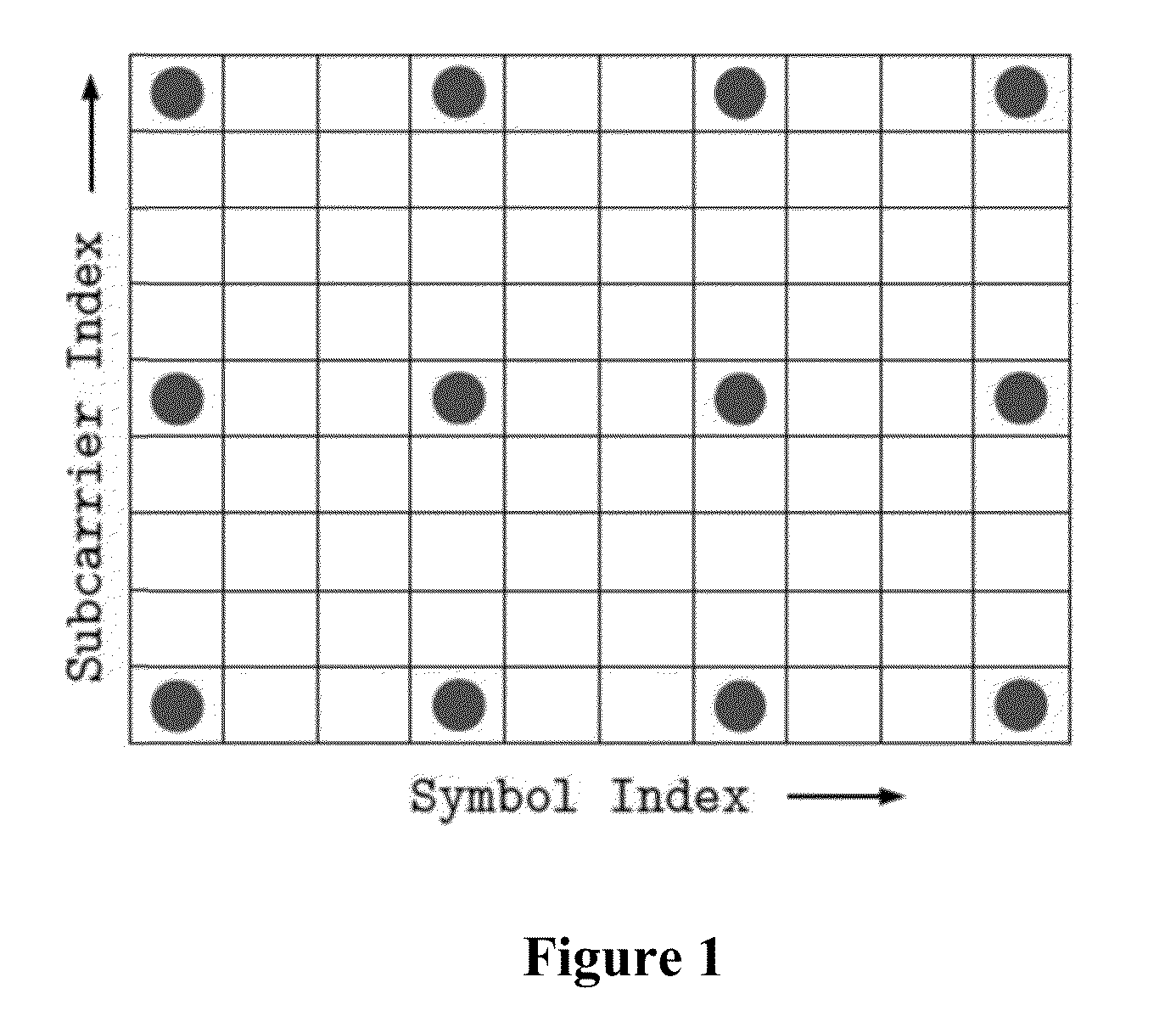System and method for providing channel equalization in orthogonal frequency division multiplexing (OFDM) wireless systems
a wireless system and orthogonal frequency division multiplexing technology, applied in multi-frequency code systems, transmission path sub-channel allocation, baseband system details, etc., can solve the problems of infeasibility of static directional antennas, severe spectrum shortage in conventional cellular bands, and devices based on mmw have already hit the market, so as to reduce the pilot density and operation low cost
- Summary
- Abstract
- Description
- Claims
- Application Information
AI Technical Summary
Benefits of technology
Problems solved by technology
Method used
Image
Examples
case 1
[0071] d(vert)(i,j)(re)≦d(vert)(i,j)(im): In this exemplary case, a native interpolation can be used to calculate the real component of the channel Re{h(i,j)}. This is because the real component of the channel at that RE is at less of an inflection as compared to the imaginary component. As such, there is a higher level of confidence for performing native interpolation on the real component.
As shown in the exemplary case of the graph of FIG. 3, native interpolation is performed on the real component of the channel between subcarriers −10 and −6.
case 2
[0072] d(vert)(i,j)(im)(vert)(i,j)(re): This case comprises a necessary, although not sufficient, condition to reconstruct the real component from the imaginary and absolute components. If the absolute component happens to be at a high inflection at this location, however, there is less confidence in the reconstruction. Therefore, if d(vert)(i,j)(im)+d(vert)(i,j)(abs)(vert)(i,j)(re), the real component is reconstructed from the imaginary and absolute components. Otherwise, native interpolation is used to determine the real component. Note that if the doubt at a location is undefined, native interpolation is also used. As shown in the exemplary case of the graph of FIG. 3, reconstructed interpolation is performed on the real component of the channel between subcarriers −18 and −14.
[0073]FIG. 10 shows an exemplary flow diagram of an exemplary method estimating, in a single dimension, a frequency response of a communication channel represented by a plurality of sub-carriers according t...
PUM
 Login to View More
Login to View More Abstract
Description
Claims
Application Information
 Login to View More
Login to View More - R&D
- Intellectual Property
- Life Sciences
- Materials
- Tech Scout
- Unparalleled Data Quality
- Higher Quality Content
- 60% Fewer Hallucinations
Browse by: Latest US Patents, China's latest patents, Technical Efficacy Thesaurus, Application Domain, Technology Topic, Popular Technical Reports.
© 2025 PatSnap. All rights reserved.Legal|Privacy policy|Modern Slavery Act Transparency Statement|Sitemap|About US| Contact US: help@patsnap.com



